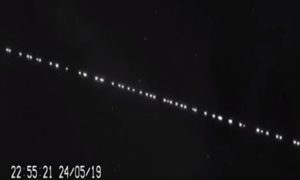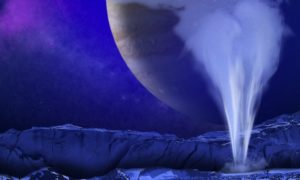
Strontium, a chemical element used in the manufacture of red fireworks, was detected for the first time in space using the Very Large Telescope (TGT) of the European Southern Observatory (ESO) located in Chile.
This detection confirms the possibility that the heavier elements of the Universe are formed during the melting of neutron stars and can complete the puzzle of the formation of chemical elements.
For the first time, we are able to establish a direct link between the creation of a new neutron capture element and the fusion of neutron stars.
Camilla Juul Hansen of the Max Planck Institute
In 2017, following the detection of gravitational waves crossing the Earth, the ESO directed its Chilean telescopes towards the source event: a fusion of neutron stars, elegantly named GW170817.
According to a theory in astronomy, if such collisions are accompanied by the formation of heavier elements, the signatures of these can be detected in the explosive remnants of these star fusions (called kilonova).
This is what the team of the ESO , whose work is described in the journal Nature of 24 October.
After the GW170817 event, the ESO monitored the explosion of the kilonova over a wide range of wavelengths.
The X-Shooter instrument of the TGT has notably acquired a series of spectra ranging from ultraviolet to infrared.
A first analysis of these spectra showed the presence of heavy elements within the kilonova. However, astronomers remained unable to differentiate them from each other.
A new analysis of the data acquired in 2017, during the merger, has recently identified the signature of one of the heavy elements composing this fireball, demonstrating that the collision of neutron stars is accompanied by the creation of this element in the Universe.
Darach Watson, Associate Professor at the University of Copenhagen, Denmark
This element, strontium, is naturally present on Earth in the soil and is concentrated in certain minerals.
The space and the puzzle of the elements
Since the 1950s, astronomers have known the physical processes that lead to the creation of chemical elements. Over the following decades, they discovered the cosmic sites of each of these nuclear forges, with the exception of one.
This discovery marks the end of our quest for the origin of chemical elements.
We now know that the processes leading to the formation of chemical elements occur mostly within ordinary stars, during supernova explosions, or in the outer envelopes of old stars , explains Darach Watson.
Until now, however, we did not know the location of the ultimate process, the fast neutron capture, responsible for creating the heaviest elements of the periodic table.
Darach Watson
During this capture, an atomic nucleus captures neutrons fast enough to allow the creation of very heavy elements.
In fact, we thought we could detect strontium soon after the occurrence of the event. However, translating this idea into a demonstration proved particularly complicated , says Jonatan Selsing of the University of Copenhagen.
This difficulty resulted from our lack of knowledge of the spectral appearance of the heaviest elements of the periodic table.
Jonatan Selsing
Event GW170817 resulted in the fifth gravitational wave detection using the Laser Interferometer Gravitational Wave Observatory (LIGO) instrument and the Virgo Interferometer in Italy.
The first ones were detected on September 14, 2015.
Tammy Fantesco is a reporter for Tech Droid. After graduating from Alliance Manchester Business School, Tammy got an internship at Channel 4 where she worked on social media outreach. Tammy was also was a columnist for the Huff Post UK. Tammy mostly mobile phone news.






